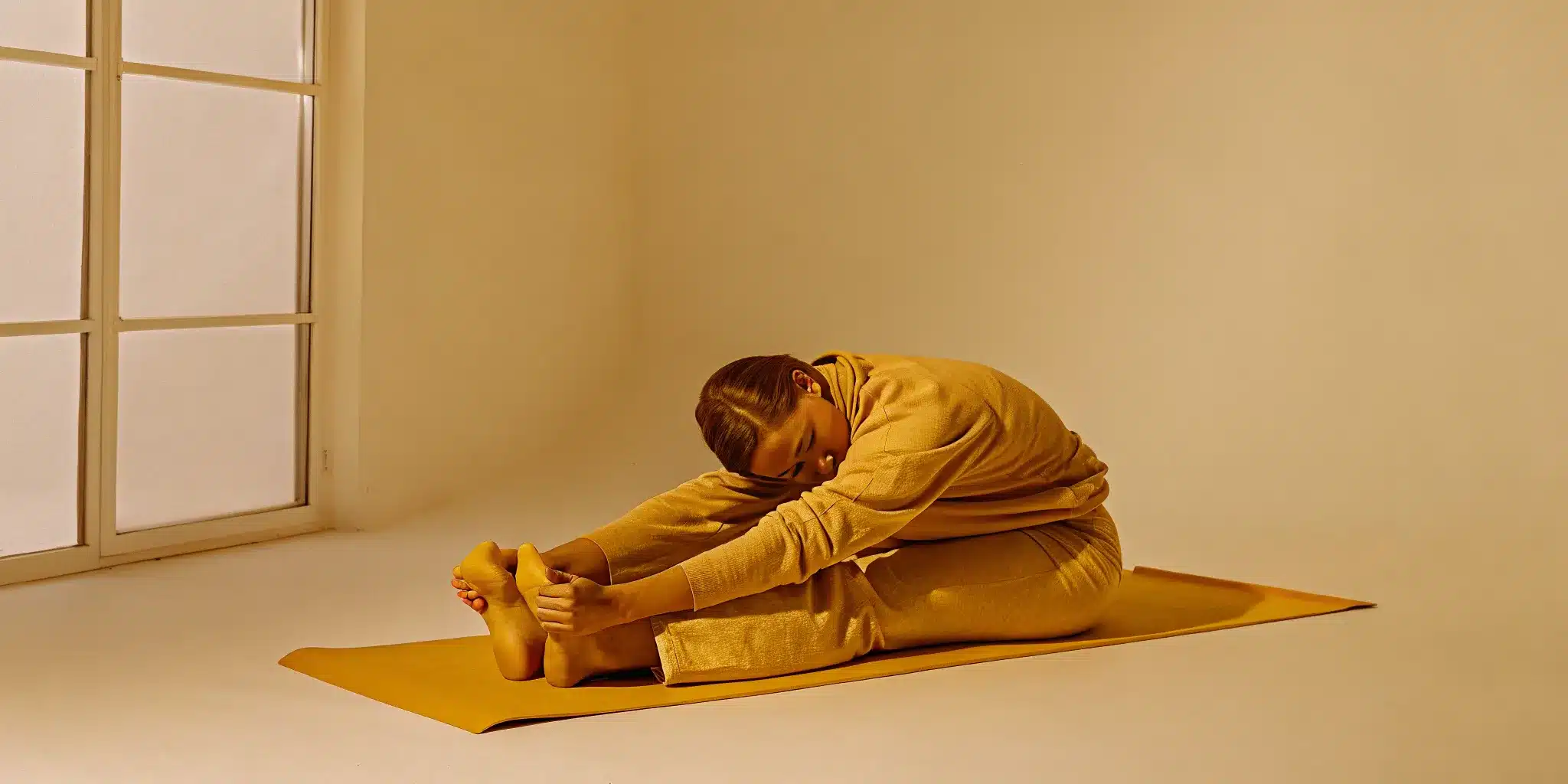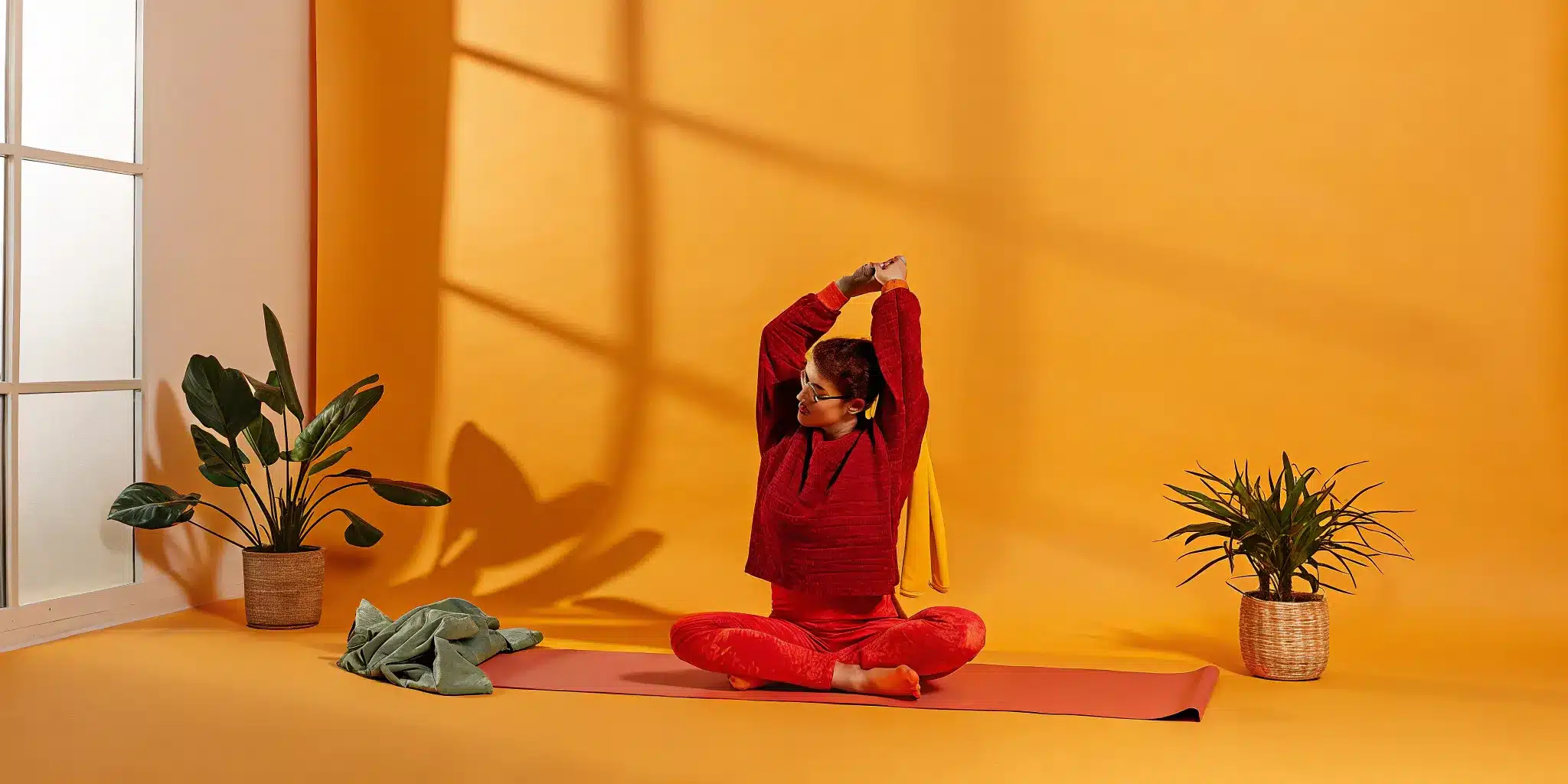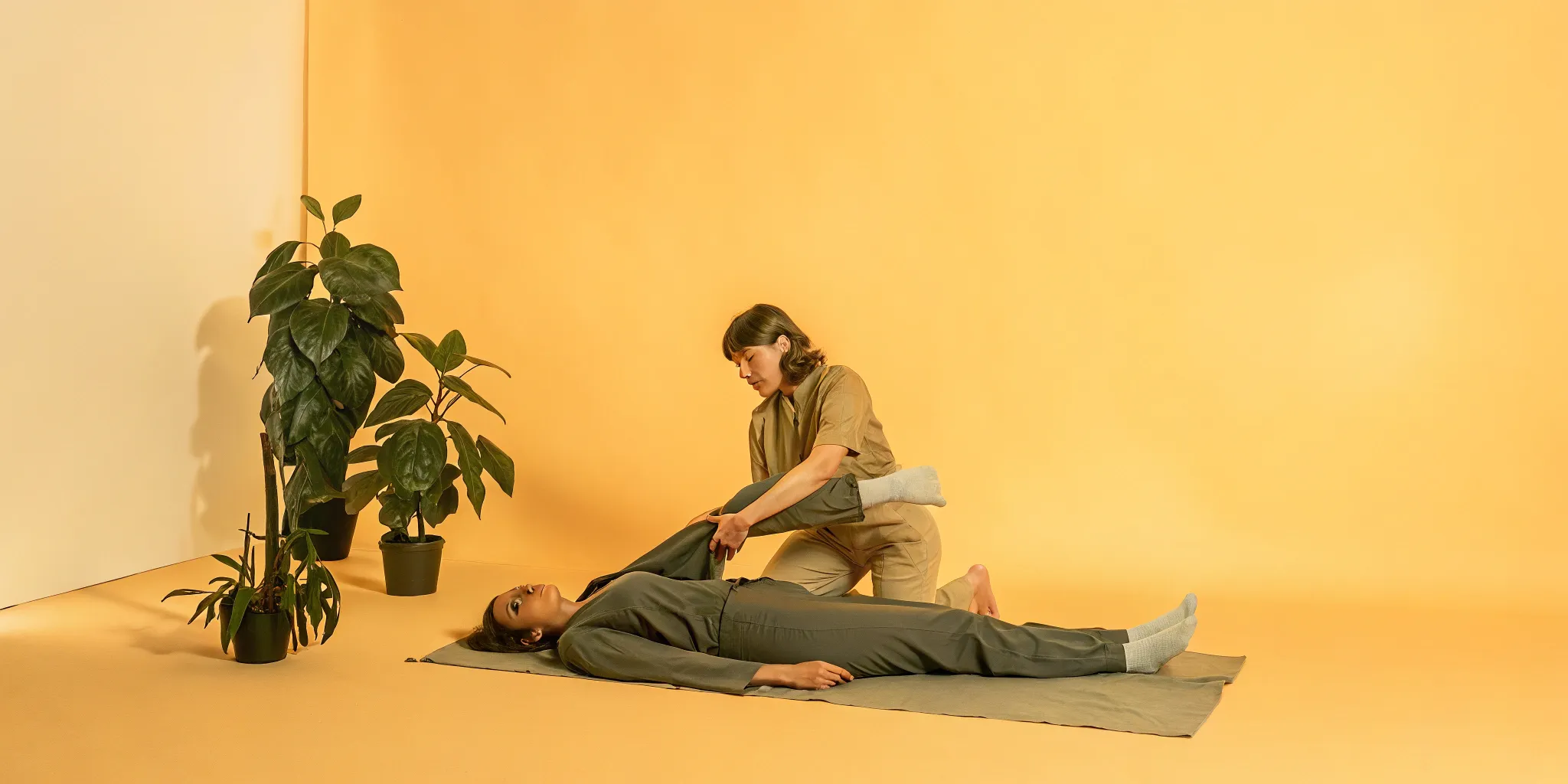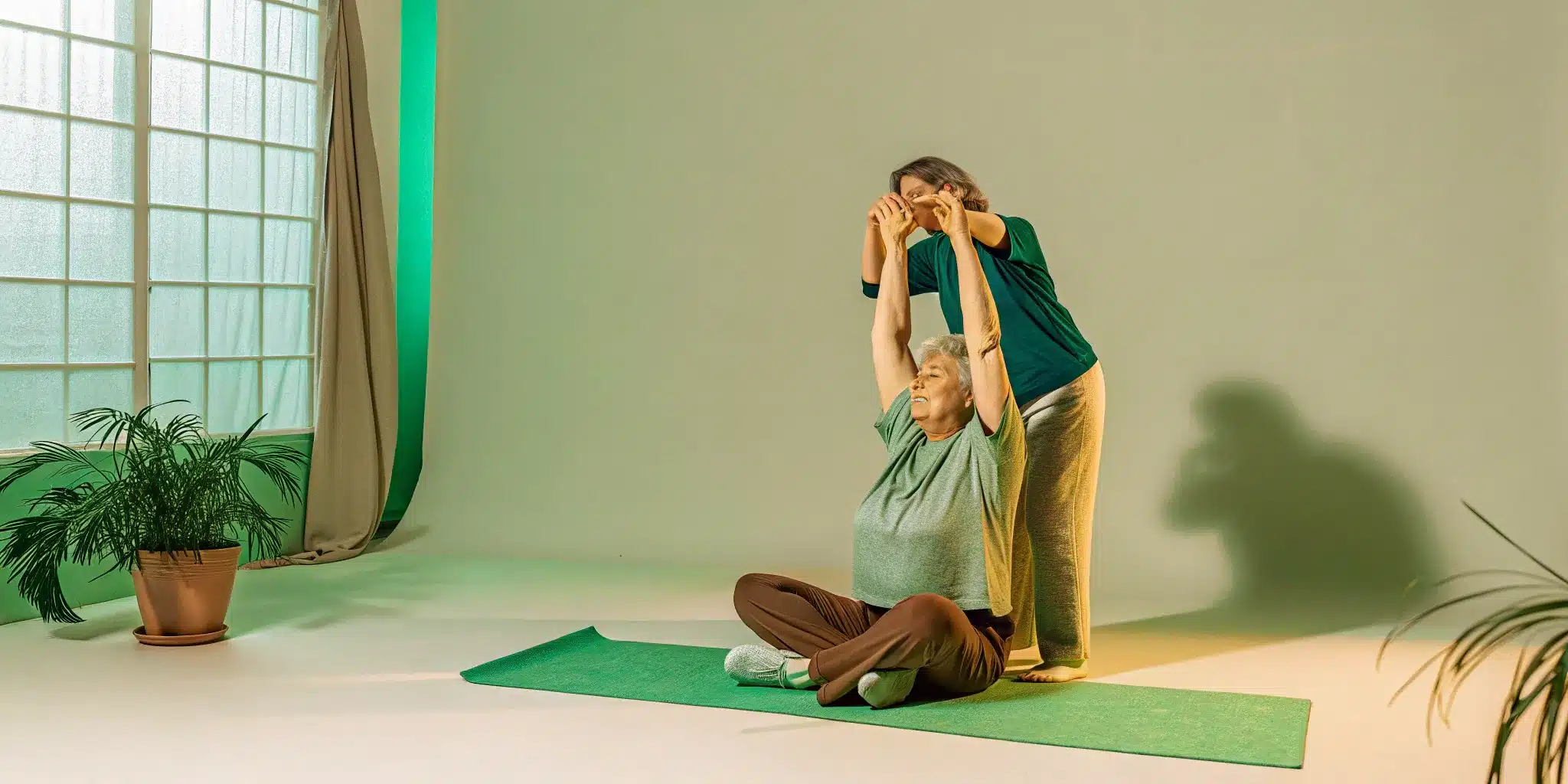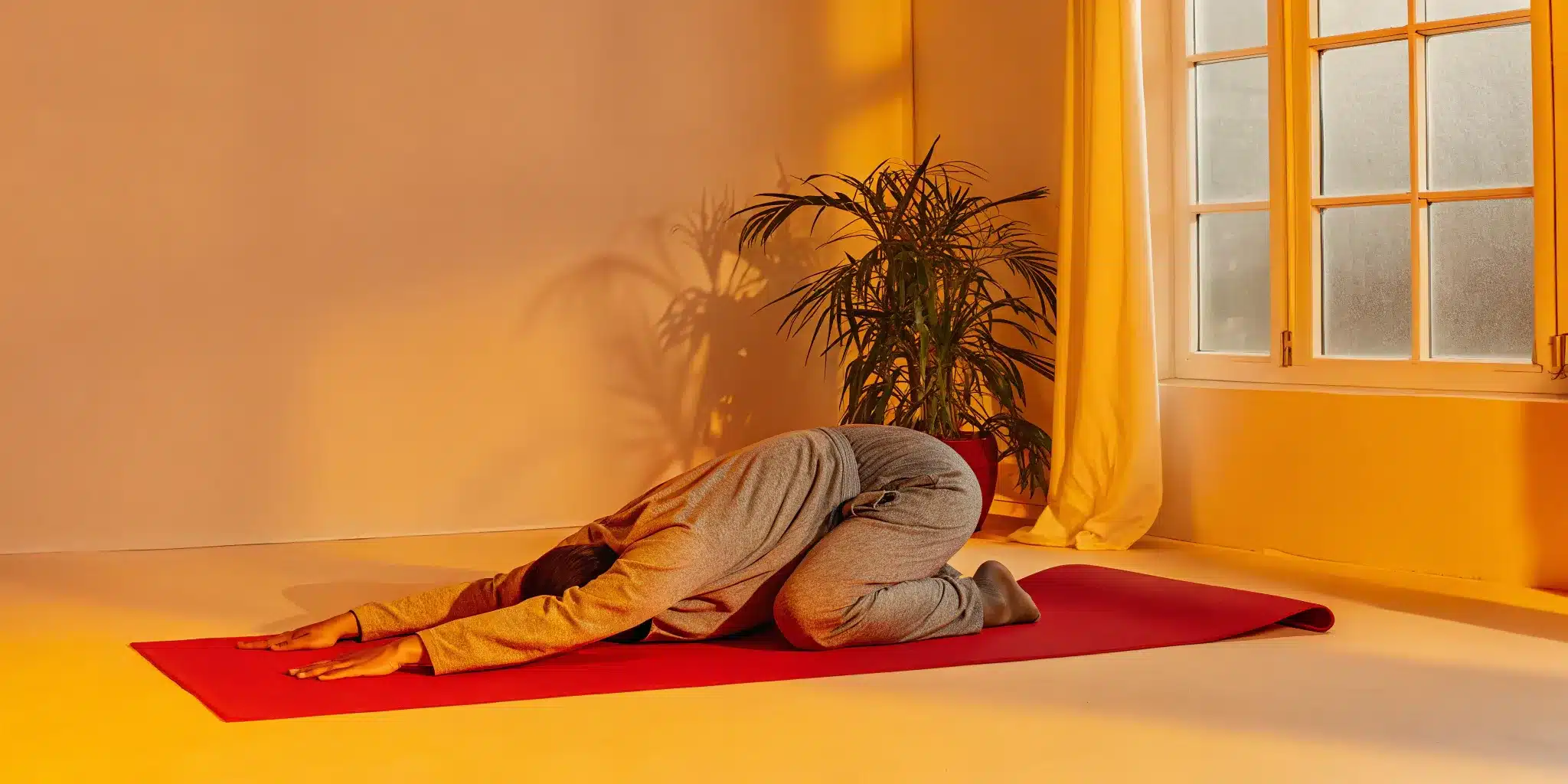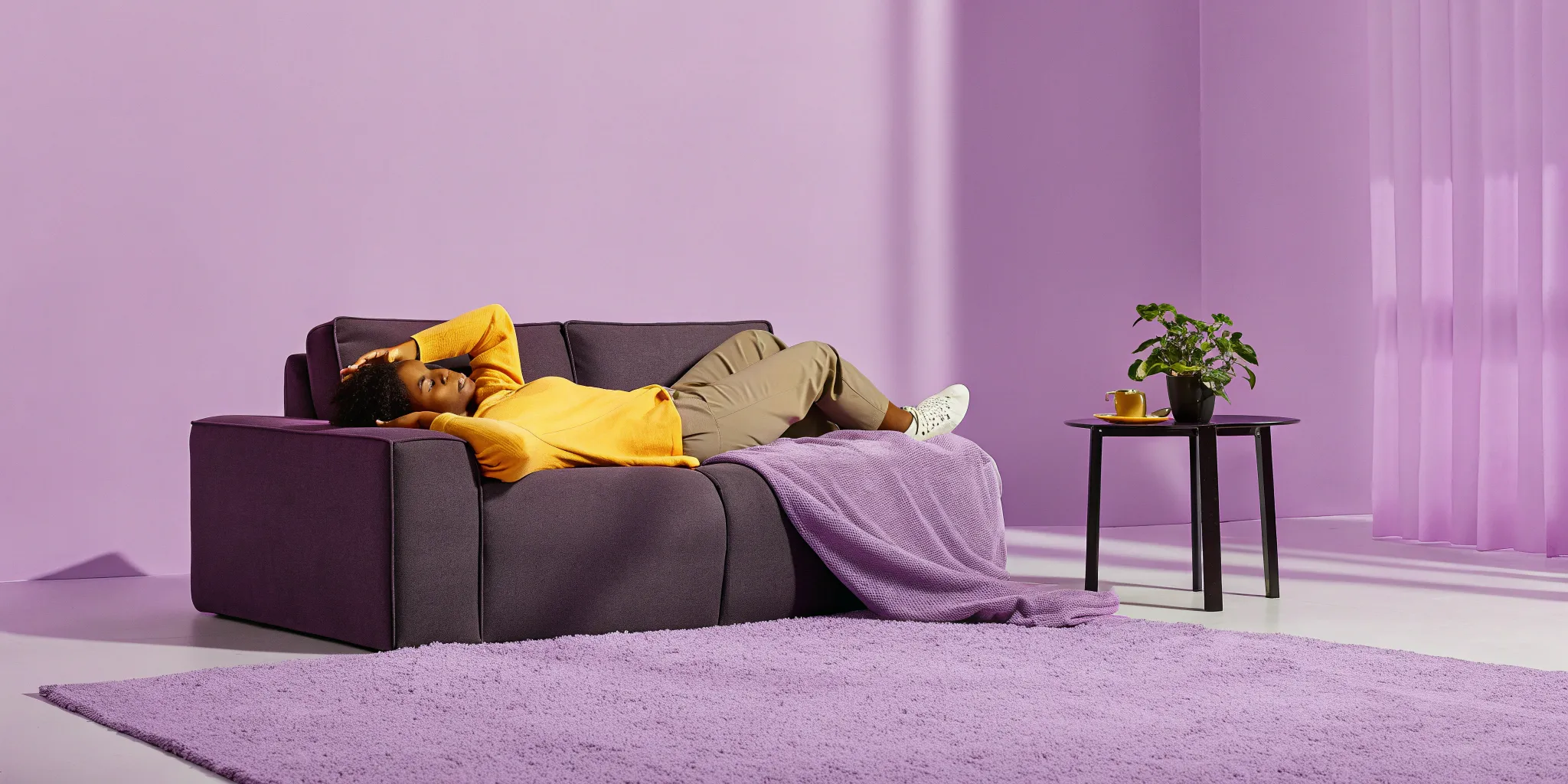If you’ve ever felt a sharp twinge in your back reaching for something or let out a groan while bending down to tie your shoes, you’ve had a direct conversation with your body’s mobility. It’s not about being able to do the splits; it’s about your ability to move your joints through their full range of motion with control and without pain. So many of us accept daily aches and stiffness as a normal part of life, but it doesn’t have to be. The solution isn’t an intense workout program. It’s about gently reintroducing movement to your body. This guide is your starting point, designed to show you how simple mobility exercises for beginners can help you feel better, reduce chronic pain, and move through your day with ease.
Key Takeaways
- Mobility is about control, not just stretching: True mobility combines your flexibility with strength, allowing you to actively move your joints through their full range. This is the foundation for reducing pain and moving with ease in your daily life.
- Small, daily movements create big change: You don’t need long, intense sessions to see results. Aim for just 5-10 minutes of consistent mobility work each day to build a sustainable habit that fits into your schedule.
- Prioritize quality movement over quantity: Slow down and focus on your form to ensure you’re moving safely and effectively. Listening to your body and avoiding sharp pain is more important than pushing through a certain number of reps.
What is Mobility (and Why Should You Care?)
If you’ve ever felt a twinge in your back reaching for something on a high shelf or groaned while bending down to tie your shoes, you’ve come face to face with your body’s mobility—or lack thereof. Simply put, mobility is your ability to move your joints and muscles through their full range of motion with control and without pain. It’s the foundation of every move you make, from walking up the stairs to carrying groceries. Good mobility means your body works as a cohesive unit, allowing you to perform daily tasks with ease and participate in activities you love. It’s not just for athletes; it’s for anyone who wants to feel good in their own skin and move through life freely and without restriction.
Mobility vs. Flexibility: What’s the Difference?
It’s easy to use the terms “mobility” and “flexibility” interchangeably, but they describe two different things. Think of flexibility as your muscles’ ability to lengthen or stretch. It’s a passive quality—how far a muscle can go. Mobility, on the other hand, is active. It’s the usable range of motion you have at a joint, combining your flexibility with strength and control. You can be flexible without being mobile. For example, you might be able to pull your leg into a deep stretch, but can you lift it there on its own? That’s the difference. True freedom of movement comes from improving your mobility, which allows you to actively control your body through its entire range.
How Movement Keeps Your Joints Healthy
Our bodies are designed to move. When we don’t move enough—thanks to desk jobs or long commutes—our joints can become stiff and our muscles tight. This can lead to poor movement patterns, compensation from other muscles, and eventually, pain or injury. Incorporating regular mobility work helps counteract the effects of a sedentary lifestyle by lubricating your joints and maintaining their health. It ensures you can move properly, reducing the risk of injury during both everyday activities and exercise. Think of it as essential maintenance for your body. Just a few minutes of targeted mobility exercises can help you feel less stiff and move more smoothly throughout your day.
The Real-Life Benefits of Moving Better
Improving your mobility isn’t just about touching your toes; it’s about enhancing your overall quality of life. When you move better, you feel better. Everyday tasks become less of a chore, and you can engage more fully in hobbies, sports, and time with family. Better mobility can reduce chronic aches and pains, improve your posture, and give you more confidence in your body’s abilities. As we age, maintaining mobility is crucial for staying independent and active. It helps slow down age-related changes like stiffening joints and less pliable tendons. Ultimately, investing in your mobility is an investment in your long-term health, helping you stay vibrant and capable for years to come.
Overcome Common Beginner Hurdles
Starting a new movement practice can feel a little intimidating, especially if you’re dealing with chronic pain or stiffness. It’s completely normal to wonder if you’re doing things right, feel a bit awkward at first, or struggle to find the motivation to stick with it. The good news is that these hurdles are not just common; they’re expected. The key is to approach them with a bit of patience and a solid plan. Think of this as learning a new skill, like cooking or playing an instrument. You wouldn’t expect to be a master chef on day one, and the same goes for your body.
The most important thing is to listen to your body and not push through sharp pain. Discomfort from a gentle stretch is different from a signal that you’re going too far. We’ll walk through how to tell the difference, build a routine that actually fits into your life, and set goals that make sense for you right now. By anticipating these common challenges, you can move past them and start reaping the incredible benefits of improved mobility, like easier daily movements and a significant reduction in pain. Let’s get you moving with confidence.
Working Through Stiffness and Discomfort
When you first start moving, you might feel stiff or notice some discomfort. That’s okay—it’s your body waking up. Mobility training is designed to help your joints move through their full range of motion, which improves blood flow to your muscles and helps your brain better control your movements. The goal isn’t to force anything. Instead, focus on gentle, controlled motions. You should feel a light stretch, not sharp pain. Over time, these exercises will help reduce that feeling of stiffness and make everyday activities, like tying your shoes or reaching for something on a high shelf, feel much easier.
How to Build a Consistent Habit
The secret to seeing real change is consistency, but that doesn’t mean you need to block out an hour every day. In fact, it’s much more effective to do short, frequent sessions. Aim for just 5 to 10 minutes of mobility work each day. This approach is less overwhelming and easier to fit into a busy schedule. Try “habit stacking”: pair your mobility routine with something you already do daily, like right after you brush your teeth or while your coffee is brewing. Making it a small, non-negotiable part of your day is the best way to build a lasting habit.
Set Realistic Expectations for Your Body
It’s easy to get discouraged if you expect overnight results, so let’s set some realistic expectations. Improving mobility is a gradual process. It’s a combination of your muscle strength, flexibility, joint health, and your body’s overall control. Progress won’t always be linear; some days you’ll feel more open than others. Instead of focusing on how flexible you look, pay attention to how you feel. Can you bend down with less strain? Is it easier to get out of a chair? Remember, you can start at any age or fitness level, so be patient and celebrate the small wins along the way.
Get Set Up for Success
Starting a new routine can feel like a big deal, but preparing for mobility work is refreshingly simple. You don’t need a home gym or expensive gear to begin reclaiming your body’s natural range of motion. The key is to create a comfortable space and a consistent mindset. By setting yourself up with a few basic tools and a clear plan, you can build a practice that feels supportive and sustainable from day one. Think of it as carving out a small, dedicated time and place just for you and your well-being. This simple preparation makes it much easier to show up for yourself, even on days when you don’t feel motivated.
The Simple Tools You’ll Need
You can start doing mobility exercises with just your body and a bit of floor space. However, a few simple tools can make your practice more comfortable and effective. A yoga mat provides cushioning for your joints, while resistance bands can help you deepen stretches and activate specific muscles. A foam roller is another fantastic tool for beginners. Using one for Self-Myofascial Release (SMR) helps relax tight muscles and fascia, which can significantly improve flexibility. You don’t need to buy everything at once; start with what you have and add tools as you feel the need.
Create Your At-Home Mobility Space
You don’t need a dedicated room to build a successful mobility practice. Find a quiet corner in your home where you have enough space to stretch out your arms and legs. The goal is to make movement an easy choice. You can fit small “movement snacks” into your day, like when you first wake up, during a work break, or before bed. Consistency is more important than duration. It’s much better to do short, focused sessions of 5-10 minutes a few times a week than one long session once a week. This approach helps your body adapt gradually and turns mobility into a natural part of your daily life.
Follow These Key Safety Guidelines
The most important rule of mobility work is to listen to your body. Movement should feel good, not painful. If you feel a sharp or shooting pain, ease up or stop the exercise entirely. It’s also helpful to be aware of common beginner mistakes so you can avoid them. Try not to rush through the movements; slow and controlled is always better. Remember to breathe steadily, keep your core engaged to support your spine, and focus on using the correct muscles for each exercise. Paying attention to these details will help you build a safe and effective practice that leaves you feeling better, not sorer.
Your First Full-Body Mobility Routine
Ready to get moving? A full-body routine is the perfect way to start because it addresses all the major areas that can feel tight or stiff from daily life. Think of mobility as your body’s ability to move through its full range of motion with ease and control—no creaks, aches, or pains allowed. The goal here isn’t to force anything. It’s to gently reintroduce movement to your joints and muscles.
This routine is designed to be a simple starting point. You can do these exercises as a quick warm-up before a walk, as a cool-down after a workout, or on their own to break up a long day of sitting. Listen to your body, move slowly, and focus on how each stretch feels. Let’s begin.
Exercises for Your Upper Body
So much of our day is spent hunched over keyboards or phones, which can leave our shoulders, neck, and upper back feeling tight and achy. These simple movements help open up your chest and restore motion to your shoulder joints. Start with a few gentle Arm Raises, lifting your arms overhead slowly to feel a stretch through your sides. Then, try some Shoulder CARs (Controlled Articular Rotations) by making slow, deliberate circles with your arms to explore your shoulder’s range of motion. This helps lubricate the joint and can make reaching and lifting feel much easier.
Exercises for Your Lower Body
Our hips and legs are our foundation, but they can get incredibly stiff from sitting for long periods. Gentle lower body exercises can help you walk, climb stairs, and even just stand up with greater ease. The 90-90 Stretch is a fantastic starting point for opening up your hips without putting pressure on your joints. Another great option is a simple Crescent Lunge, which targets your hip flexors—the muscles at the front of your hips that often get tight. Consistently practicing these foundational movements will help you build and maintain lifelong flexibility and mobility.
Exercises for Your Core and Spine
A healthy spine is central to all movement. When your back is stiff, everything feels harder. These exercises focus on gentle spinal movement to relieve tension and improve your core stability. The Cat-Cow stretch is a classic for a reason; it gently moves your spine through flexion and extension, which can feel amazing on a stiff lower back. To finish, relax into Child’s Pose for a few deep breaths. This pose not only stretches your back but also helps calm your nervous system. Regular mobility work is a key part of avoiding injury and staying active.
Put It All Together with Full-Body Moves
Now, let’s create a simple flow. You don’t need a lot of time—even 10 to 15 minutes can make a huge difference. Start with a few minutes of gentle warm-ups like arm circles, leg swings, and torso twists to get your blood flowing. Then, pick one or two exercises from each category above: upper body, lower body, and core. Move through them slowly, focusing on your breath and control. For example, you could do a set of Arm Raises, followed by the 90-90 Stretch, and finish with a few rounds of Cat-Cow. This creates a balanced routine that addresses your entire body.
Create a Routine That Sticks
How to Start a Sustainable Practice
When you’re just starting out, the key is to focus on frequency over duration. It’s much more effective to do short sessions of 5-10 minutes five times a week than one long session once a week. This approach helps you build a consistent habit without feeling overwhelmed. A great way to make it stick is to link your mobility work to something you already do every day. For example, you could do a few simple stretches right after you brush your teeth in the morning or while your coffee is brewing. This “habit stacking” makes it easier for your brain to adopt the new routine, turning it into a seamless part of your day.
How Often and For How Long?
The simple answer is to aim for some form of mobility work every day. Consistency is what signals to your joints and muscles that it’s time to adapt and improve. But don’t let the word “daily” intimidate you. Doing just 5 to 10 minutes a day can make a huge difference over time. On busy days, even a few minutes of focused movement is a win. The goal is to create a daily touchpoint with your body, checking in and gently encouraging a greater range of motion. Remember, every little bit counts toward feeling better and moving more freely in your daily life.
Simple Ways to Track Your Progress
It can be hard to notice small changes day-to-day, which is why tracking your progress is a great way to stay motivated. One simple method is to film yourself. Pick one or two exercises and record yourself doing them once a week to see a visual record of your improvement. Another powerful tool is a workout journal. After each session, jot down how your body feels. Note what movements felt easier or what you were able to do that you couldn’t before. This practice helps you recognize patterns and celebrate the small victories, like bending down to tie your shoes without that familiar twinge.
Focus on Your Form
When you’re just starting a new movement practice, it’s easy to focus on getting through the exercises. But the real benefits of mobility work come from how you move, not just that you’re moving. Think of it as quality over quantity. Performing one squat with perfect alignment is far more valuable than doing ten with sloppy form. Good form ensures you’re targeting the correct muscles and joints, building strength and control where you need it most. More importantly, it’s your number one tool for preventing injury.
Moving with intention helps you reconnect with your body. It teaches you to notice which muscles are firing, where you feel tight, and how your joints are tracking. This awareness is the foundation for creating lasting change and moving without pain. As you begin, your goal isn’t to look like a fitness model; it’s to learn the correct movement patterns for your unique body. Taking the time to master the basics will pay off immensely, allowing you to progress safely and build a practice that supports your health for years to come. Remember to be patient with yourself—learning proper form is a skill that develops with practice.
Avoid These Common Mistakes
We’ve all been there—eager to see results, we sometimes develop habits that can do more harm than good. One of the most frequent issues is simply rushing through movements. Slowing down allows you to control the exercise and feel what’s happening in your body. Another common pitfall is forgetting to engage your core. Your core muscles are essential for stability, and keeping them active helps protect your spine and maintain proper alignment. Finally, watch out for overcompensating with other muscles. If you’re trying to work your hips but feel it mostly in your lower back, it’s a sign that other muscles are taking over. Recognizing these common mistakes is the first step to correcting them and getting the most out of every move.
Learn Proper Movement Patterns
Mobility is much more than just passive stretching. It’s about active control through your entire range of motion. This is why learning proper movement patterns is so important. A movement pattern is simply the way your brain coordinates your muscles and joints to perform an action, like a squat or reaching overhead. When you practice mobility exercises with good form, you are essentially teaching your body more efficient and safer ways to move. This requires both strength and control. By focusing on mastering these foundational patterns, you’re not just improving your flexibility; you’re building a resilient body that’s better equipped to handle daily activities without strain or injury. This focus on control and strength is what separates effective mobility training from just going through the motions.
How to Modify Exercises for Your Body
There is no one-size-fits-all approach to movement. The most important rule is to listen to your body and honor what it’s telling you. If an exercise causes sharp or pinching pain, it’s a signal to stop and adjust. Modifying an exercise isn’t a sign of weakness; it’s a smart way to work with your current abilities. You can modify a movement by reducing the range of motion—for example, not squatting as deeply. You can also use props like pillows for knee support or a chair for balance. The goal is to feel a gentle stretch or the sensation of muscles working, not to push through pain. As your mobility improves, you can gradually reduce the modifications and adjust the intensity to continue making progress safely.
Fit Mobility Into Your Day
Finding an extra hour in your day for a new routine can feel like an impossible task, especially when you’re already dealing with stiffness or pain. The good news is, you don’t need one. When it comes to improving your mobility, consistency is far more important than duration. Sprinkling short bursts of movement throughout your day—what some people call “movement snacks”—is a powerful and sustainable way to feel better in your body without overhauling your entire schedule.
Think of it as hitting a reset button. A few minutes of intentional movement can counteract the stiffness that builds up from daily life, whether you’re sitting at a desk, driving, or standing for long periods. These small, manageable sessions prevent minor aches from becoming bigger problems. Instead of trying to carve out a huge block of time that feels intimidating, look for the small windows of opportunity that already exist. Maybe it’s while your coffee is brewing, during a commercial break, or while you’re waiting for a file to download. The goal is to make movement a natural part of your day, not another item on your to-do list. By focusing on short, frequent sessions, you’ll build a habit that lasts and start to notice real, lasting changes in how you move and feel.
A 5-Minute Morning Wake-Up Routine
How you start your morning can set the tone for the rest of your day. Instead of hitting snooze, try using those few minutes to gently wake up your body. A short morning mobility session can help ease stiffness from sleep and get your joints ready for the day ahead. You don’t need a lot of time; doing just 5 to 10 minutes a day can make a difference. The more often you do mobility exercises, the more you’ll improve. Try a few gentle Cat-Cows on your hands and knees or some slow neck rolls to release tension before you even have your first cup of coffee.
Quick Stretches for Desk Workers
If you spend a large part of your day sitting at a computer, your body probably feels it. That tightness in your neck, shoulders, and lower back is a common side effect of desk work. Taking micro-breaks to stretch can make a huge difference. These movements help fix stiffness caused by our jobs and daily lives, preventing aches from becoming chronic issues. Every hour, try standing up and doing a simple chest stretch in a doorway, rolling your wrists and ankles, or performing a gentle seated spinal twist. These small actions break up long periods of sitting and keep your joints from getting stuck.
An Evening Routine to Help You Unwind
Letting go of the day’s stress is crucial for restful sleep, and a gentle evening mobility routine can help you do just that. This isn’t about a workout; it’s about down-regulating your nervous system and releasing physical tension. A few minutes of slow, mindful movement can signal to your body that it’s time to relax and recover. Remember, it’s better to do short sessions five times a week than one long session once a week. Consistency is what matters most. Try simple floor-based movements like Child’s Pose or a gentle supine hamstring stretch to calm your mind and body before bed.
Find Professional Support and Guidance
Starting a new mobility routine can feel a little intimidating, especially if you’re not sure where to begin or how to perform movements correctly. While there are tons of free resources online, nothing beats the clarity and safety of working with a professional. Getting expert guidance ensures you’re doing what’s best for your body, helping you see results faster and avoid potential injuries. It’s an investment in moving well and feeling your best for the long haul.
Why 1-on-1 Training Makes a Difference
Think of a professional trainer or stretch therapist as your personal movement detective. Instead of following a generic video, you get an expert who can provide personalized assessments to figure out exactly where your body needs the most attention. They can measure your current range of motion and offer tailored tips to improve it safely. This individualized approach is a game-changer because it addresses your unique needs, whether you’re dealing with a tight hip from sitting all day or a stiff shoulder from an old injury. It’s the fastest way to make real, noticeable progress.
Where to Find Expert Help
When you’re ready for expert help, look for certified personal trainers, physical therapists, or specialists at dedicated stretching studios. If you’re new to mobility work, a great way to start is with two to three guided sessions a week. This structured approach helps you build a solid foundation of proper form and technique. As you get more comfortable and confident in the movements, you can gradually increase your frequency. The goal is to learn the right way to move so you can eventually practice safely on your own.
Helpful Tools and Apps to Try
If 1-on-1 sessions aren’t in the cards right now, a good mobility app can be a fantastic starting point. These apps offer structured routines and instructional videos that guide you through each movement, taking the guesswork out of your practice. For example, the Pliability app is a popular resource for beginners, with yoga-like exercises designed to improve flexibility and recovery. Using an app can help you build a consistent habit at home and learn the basics before you decide to work with a professional.
Ready for the Next Step?
Once you’ve gotten comfortable with the basics and are feeling the benefits, you might be wondering, “What’s next?” The great thing about mobility is that there’s always room to grow. It’s not about mastering a single workout; it’s about building a lifelong practice that adapts with you. Let’s look at a few ways you can continue to build on the foundation you’ve created and keep your progress going strong.
How to Progress Your Movements
The secret to improving your mobility is simple: consistency. The more often you practice, the more your body will respond. If you’re just starting, aim for two to three sessions a week. As you feel more comfortable, you can gradually increase your frequency to four or more times a week, or even daily. Progression isn’t just about adding more reps or time. It’s about quality. Focus on deepening your range of motion in each movement, feeling more control, and moving with greater ease. Listen to your body—it will tell you when it’s ready to go a little further.
Add Mobility to Your Current Workouts
You don’t need to set aside a huge chunk of time for mobility. One of the easiest ways to stay consistent is to weave it into your existing routine. Try using a few dynamic mobility exercises as a warm-up before a run or strength training session. This helps prepare your joints for the work ahead. You can also use them as a cool-down to aid in muscle recovery. Remember, it’s often better to do short, daily sessions of 5-10 minutes than one long session per week. A little bit every day goes a long way toward keeping your body feeling its best.
Challenge Yourself with Advanced Goals
As your mobility improves, you’ll notice benefits that go far beyond your workouts. You might find that daily aches and pains start to fade or that you can move through your day with more confidence. This is because regular mobility work helps strengthen your core, leading to better posture and balance. Set goals that reflect these real-life benefits. Maybe you want to garden without back pain or play with your kids on the floor. This kind of training is what helps you stay active and vibrant throughout your life, allowing you to keep doing the things you love.
Related Articles
- How to Improve Mobility After 60: A Complete Guide – STRETCHMED
- How Long Should You Stretch Before a Workout? A Guide – STRETCHMED
- 10 Benefits of Stretching: Feel & Move Better – STRETCHMED
Frequently Asked Questions
How do I know if I’m feeling a good stretch or actual pain? A good stretch should feel like a gentle, manageable pull or tension in the muscle. It might be a bit uncomfortable, but it should never be sharp or alarming. Pain, on the other hand, often feels stabbing, pinching, or electric. If you feel anything that makes you wince or hold your breath, that’s your body’s signal to ease up immediately. The goal is to work with your body, not against it.
I’m not very flexible at all. Is this kind of routine even for me? Absolutely. In fact, this routine is designed specifically for people who feel stiff or restricted in their movements. Mobility work isn’t about forcing your body into pretzel shapes; it’s about gently improving the range of motion you currently have. The focus is on how the movements feel, not how they look. Start where you are, modify as needed, and you’ll begin to notice a real difference.
How long will it be before I start to feel a difference? While you might feel a little looser right after your first session, lasting change is a gradual process built on consistency. Instead of watching the clock for a big transformation, try to notice the small victories. Maybe you can bend down to tie your shoes with less of a groan, or perhaps reaching for something on the top shelf feels easier. These subtle shifts in your daily life are the truest signs of progress.
Do I really need special equipment like foam rollers to start? Not at all. The most important tool you have is your own body, and you can get started with an effective routine using just a bit of floor space. While tools like a yoga mat or foam roller can certainly make your practice more comfortable and add variety later on, they are not a requirement to begin. Don’t let a lack of gear stop you from getting started.
What’s more important: doing a long session once a week or short ones every day? Short, frequent sessions will always be more effective for building lasting mobility. Your body adapts best to consistent signals. Think of it like learning an instrument; practicing for ten minutes every day will build skill much faster than one long practice session on the weekend. Aiming for just a few minutes of focused movement each day is a powerful and sustainable way to create real change.

